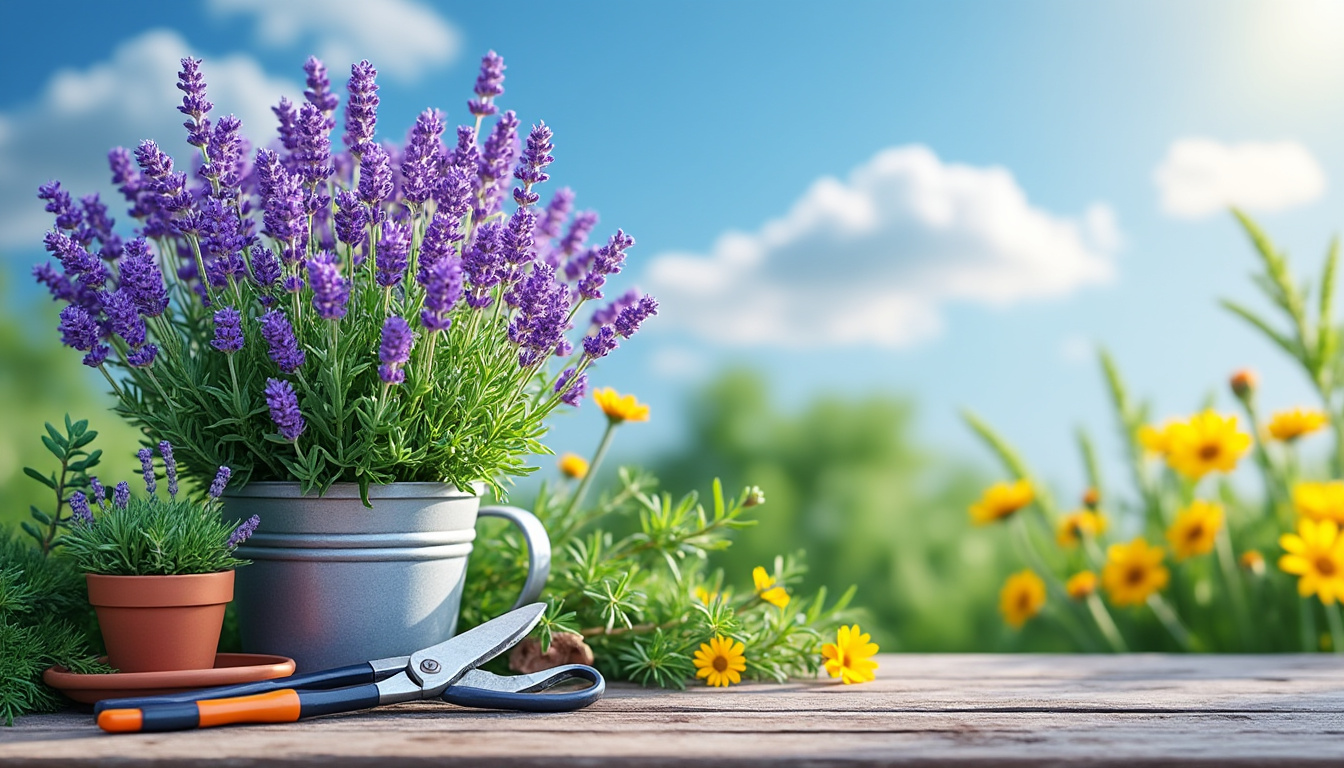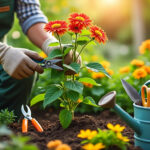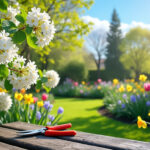Lavender, with its delightful fragrance and vibrant hues, has long been celebrated for its beauty and versatility in gardens. However, to fully enjoy Nature’s Bounty, one must master the art of pruning this regal herb. The timing and technique of pruning lavender directly influence its overall health, blooming potential, and resilience against pests and diseases. As you delve into the world of pruning lavender in 2025, this guide will illuminate the practices that ensure your lavender thrives, filling your space with Aroma and elegance.
- Why choose lavender for your garden?
- Understanding lavender species and their growth habits
- Optimal times for pruning: A seasonal breakdown
- Pruning techniques that promote lush and healthy blooms
- Common mistakes to avoid when pruning lavender
- Answers to frequently asked questions about lavender care
Why choose lavender for your garden?
Lavender, renowned for its stunning blooms, is not just a feast for the eyes. It is a vital asset to any garden. Known as a sun-seeker, lavender flourishes under direct sunlight and is often associated with Mediterranean landscapes. The plant serves multiple purposes:
- ✨ Beautiful Blooms: With more than 45 species and over 450 varieties to select from, lavender provides an array of colors and forms suitable for any style.
- 🌱 Low Maintenance: A favorite among green thumbs, lavender requires minimal care once established, making it perfect for garden newbies and seasoned horticulturists alike.
- 🌼 Pollinator Attraction: Lavender gardens are a haven for pollinators, enhancing both biodiversity and beauty in the garden.
- 🌾 Herbal Essence: Also crucial for crafting essential oils, lavender’s aromatic properties are cherished in aromatherapy and culinary applications.
Understanding lavender species and their growth habits
To truly excel in lavender gardening, it is important to identify different species and their distinct growth patterns. Two commonly cultivated varieties are:
| Species | Characteristics | Growing Conditions |
|---|---|---|
| English Lavender (Lavandula angustifolia) | Compact, hardy, and drought-tolerant. Aromatic flowers are used in perfumes and culinary dishes. | Well-draining soil with a pH of 6.5 to 7.5. Requires full sun. |
| French Hybrid Lavender (Lavandula x intermedia) | Tall growth, larger blooms, and a robust fragrance. Often used in landscaping and as cut flowers. | Thrives in dry soil and prefers full sun exposure. |
Knowing these characteristics simplifies your approach to growing each type. Opt for LavenderFarm for quality seedlings tailored to specific niches within the lavender family.
The ultimate seasonal guide to pruning your apple trees
Optimal times for pruning: A seasonal breakdown
Understanding when to prune lavender is crucial to ensuring healthy growth and an extended blooming season. Pruning can be broadly categorized into two main periods:
1. Early Spring: Preparing for Growth
Pruning in early spring, just as new growth begins, is critical. This allows the plant to shape itself before the robust growth starts. Aim to prune:
- ✂️ After the last frost in your region.
- 🌞 Ensure that you observe signs of new growth before commencing the pruning process.
Remove dead wood and any stems that have not grown new shoots. A light pruning session can involve cutting back approximately one-third of the total growth.
2. Post-Bloom: Encouraging Second Growth
After the lavender flowers have faded, a secondary pruning session can be beneficial. This helps encourage a fresh round of blooms and promotes tidiness:
- 🌸 Ensure you wait until all blooms have been harvested.
- 🌿 Remove spent blooms and snip back to a set of healthy leaves.
This method not only aids in flowering but also prevents the plant from becoming overly woody.
Pruning techniques that promote lush and healthy blooms
Equipped with the right pruning tools such as pruning shears or snips from Gardener’sSupply, you can achieve excellent results. Here are effective techniques to consider:
1. Cut at the Right Points
Always aim to cut above a set of leaves or buds. This encourages new growth from these points rather than older, woody parts:
- 🌳 Avoid cutting into the older growth or woody sections of the plant as this can inhibit future growth.
2. Don’t Overprune
It’s essential to recognize that lavender needs its foliage to thrive. PrunePerfect is a mantra to remember; less is often more when it comes to pruning:
- ⚖️ Focus on maintaining a balanced shape while retaining enough foliage to power its energy.
3. Sanitize Your Tools
Prevent the transmission of diseases by sterilizing your pruning tools before and after use:
- 🧼 Clean tools with alcohol wipes or a bleach solution to eliminate pathogens and ensure plant safety.
| Technique | Description | Benefits |
|---|---|---|
| Early Spring Pruning | Cut back one-third of the plant to stimulate new growth. | Enhances flower production and plant vigor. |
| Post-Bloom Pruning | Remove spent blooms and trim back to the leaves. | Promotes a tidy appearance and encourages repeat blooms. |
| Regular Maintenance | Minor pruning to remove dead or damaged leaves. | Makes for a healthier plant and minimizes disease risk. |
Common mistakes to avoid when pruning lavender
Even experienced gardeners can make hasty decisions while pruning lavender. Here are common pitfalls and how to avoid them:
- 🚫 Cutting too much: Overpruning can stress the plant and lead to dieback. Follow the one-third rule to maintain balance.
- 🌪️ Pruning at the wrong time: Timing is crucial. Avoid pruning during extreme temperatures or during its early growth phase.
- 🏵️ Ignoring plant health: Always inspect the health of the plant before pruning. Look out for pests or diseases that might require different care.
Answers to frequently asked questions about lavender care
1. Can I grow lavender from cuttings?
Yes! Lavender can easily be propagated from cuttings taken during the summer months. Simply trim a healthy 4-6 inch section and follow propagation best practices for optimal results.
2. How often should I water lavender?
Water newly planted lavender regularly for the first few weeks but allow established plants to thrive on their own. They are drought-tolerant, needing minimal hydration once settled.
3. What are the signs of overwatering lavender?
Common signs include yellowing leaves, wilting, or a soggy odor from the soil. Always ensure your lavender is planted in well-draining soil to mitigate risks of root rot.
4. When is the best time to plant lavender?
The ideal planting time depends on your climate, but early spring or fall presents optimal conditions. Give your plants a head start during mild weather.
5. Are there specific pest concerns for lavender?
Aphids and spittlebugs can affect lavender. Maintaining good air circulation along with proper pruning can help prevent infestations.
By mastering these practices and understanding the nuances of lavender care, you can create a flourishing garden oasis that radiates beauty and tranquility. Step into your outdoor sanctuary, equipped with knowledge, tools, and an appreciation for these marvelous blooms! 🌼















